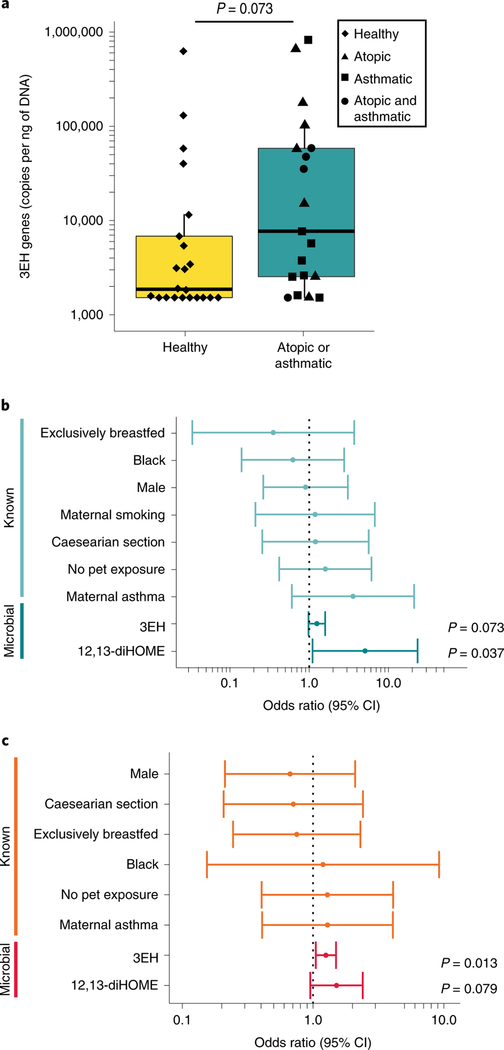Fig. 4 |. Increased concentrations of 12,13-diHOME and the 3EH genes in neonatal stool are associated with the development of childhood atopy, eczema and/or asthma in two US cohorts.
a, Increased bacterial 3EH copy number is observed in neonates who developed atopy and/or asthma, and corresponds with the significant increase in overall faecal EH genes identified by ShortBred analysis (n = 41 neonates; LR, P = 0.0387; Fig. 3b, Supplementary Table 10). Data are presented as a boxplot that was generated using ggplot2, which displays the median, the 25th and 75th percentiles, and the smallest and largest values within 1.5× the interquartile range (whiskers). b, In a subset of the WHEALS cohort, an increase in 12,13-diHOME concentration in neonatal stool significantly increased the relative probability of developing atopy at two years of age and/or asthma at four years of age (n = 41 neonates; LR, 3EH+: OR = 1.25, 95% CI = 0.98–1.59, P = 0.073; 12,13-diHOME adjusted for race: OR = 5.07, 95% CI =1.10–23.3, P = 0.037; see Supplementary Table 12 for a full summary of the statistical analysis). For 3EH, analysis was performed using a log2 transformation of the 3EH copy number. c, In a subset of the TIPS birth cohort, an increase in faecal 3EH copy number was associated with a significantly increased relative probability of developing eczema in two-year-old children and/or asthma in four-year-old children (n = 50 neonates; LR, 3EH+: OR = 1.25, 95% CI = 1.05–1.50, P = 0.013; 12,13-diHOME: OR = 1.51, 95% CI = 0.95–2.40, P = 0.079; see Supplementary Table 14 for a full summary of the statistical analysis). For 3EH, analysis was performed using a log2 transformation of the 3EH copy number. The OR and CI for each risk factor are shown in b and c. See also Supplementary Fig. 3 and Supplementary Tables 6–14.

